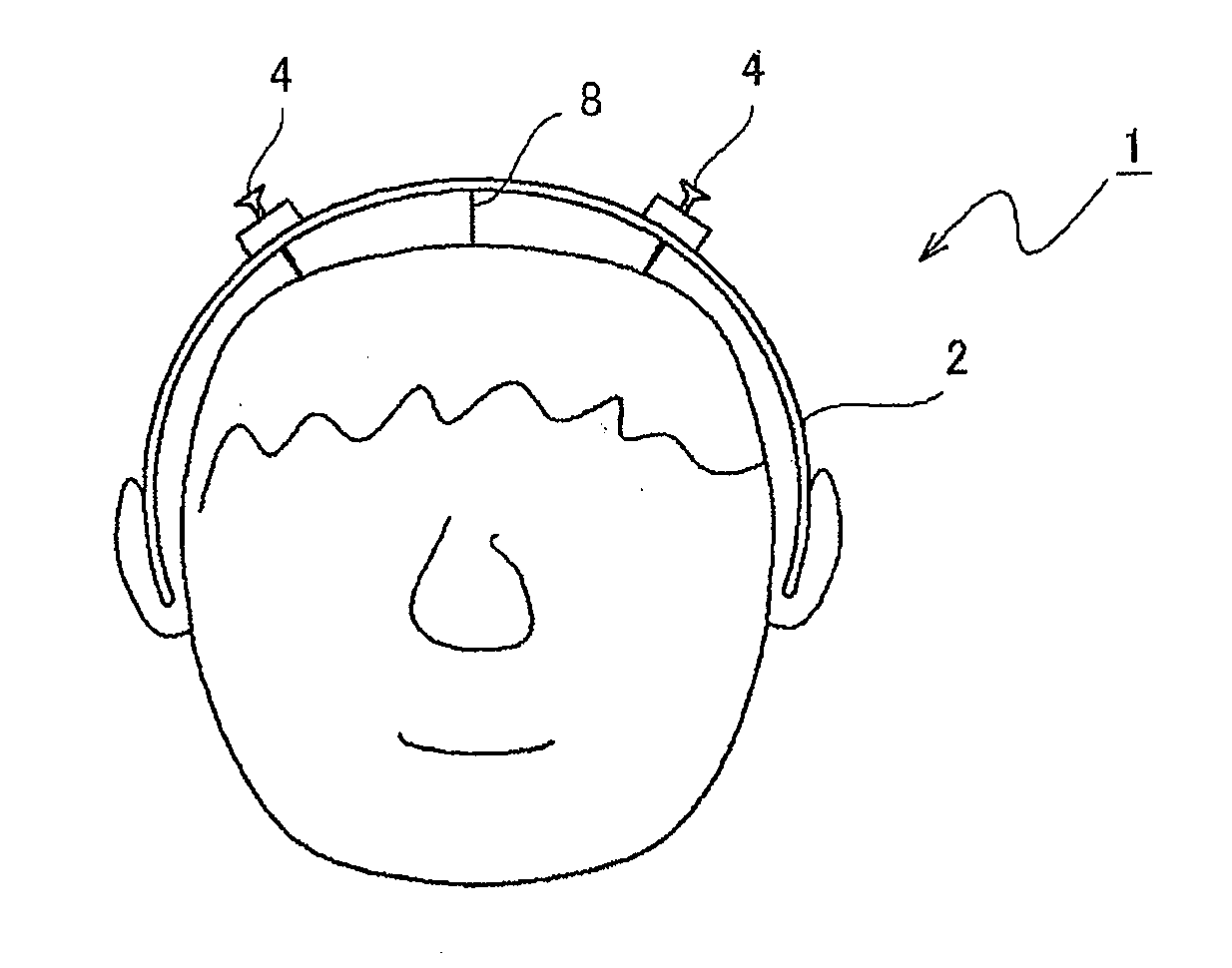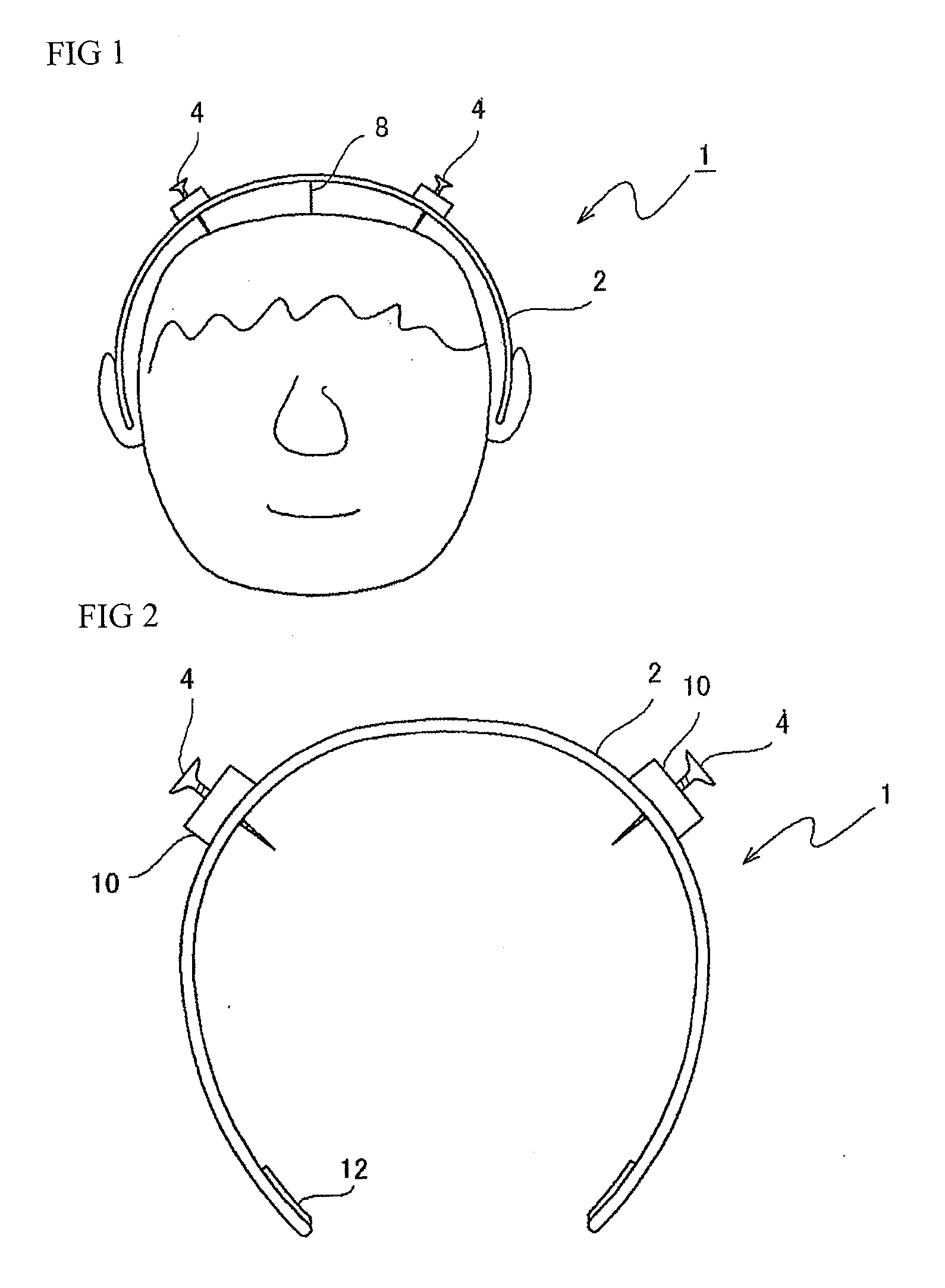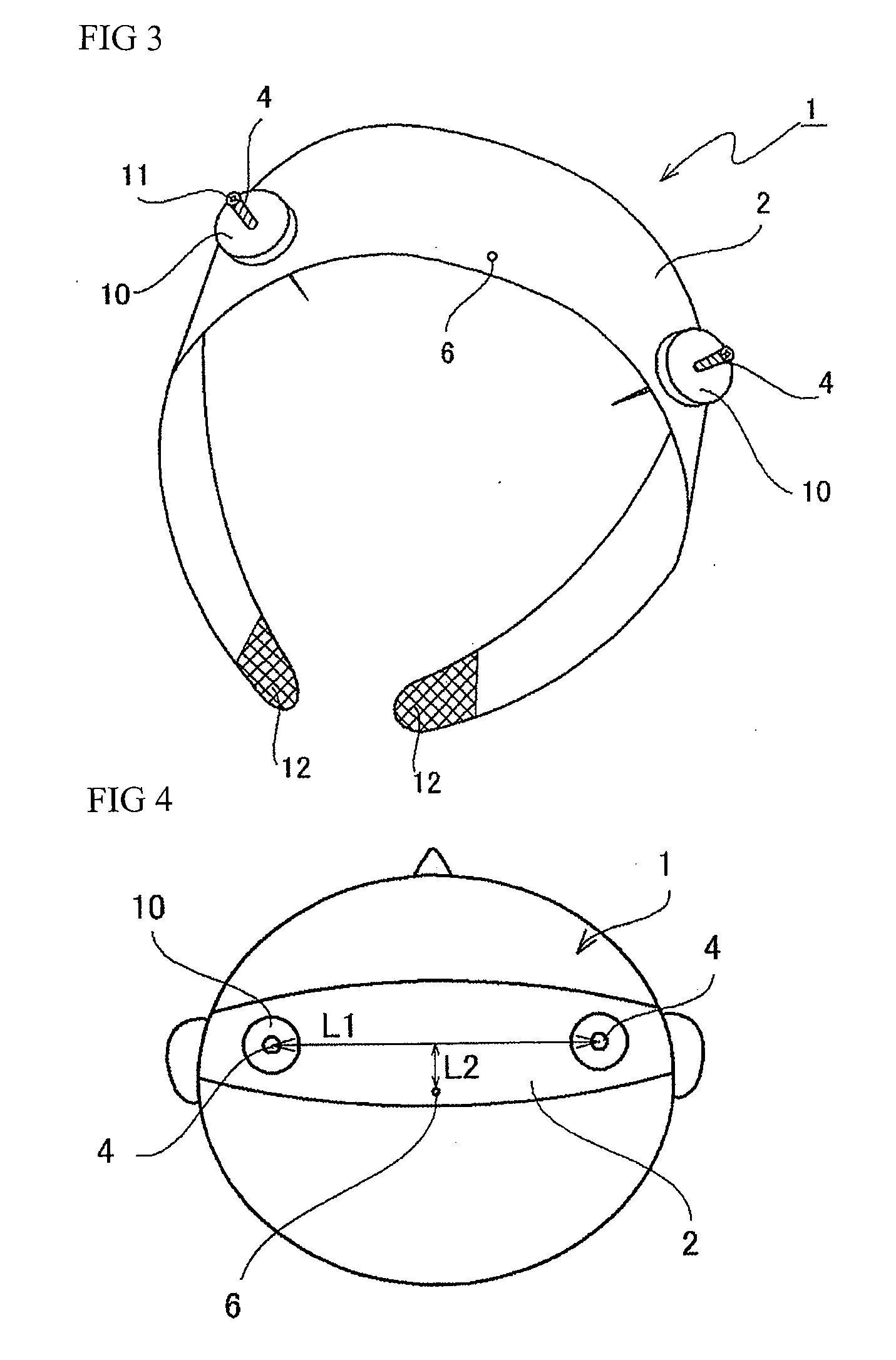Transcranial electrical stimulation device
a transcranial electrical stimulation and electrode technology, applied in the direction of head electrodes, internal electrodes, therapy, etc., can solve the problems of inability to accurately position the electrodes to the predetermined position of the patient's head, time required for mounting electrodes, and inability to accurately stimulate the motor area of the cerebral cortex. , to achieve the effect of stimulating the motor area of the cerebral cortex, stable potential, and sufficient stimulation
- Summary
- Abstract
- Description
- Claims
- Application Information
AI Technical Summary
Benefits of technology
Problems solved by technology
Method used
Image
Examples
Embodiment Construction
[0042]The embodiments of the present invention are described with reference to the drawings.
[0043]As shown in FIGS. 1-4, a transcranial electrical stimulation device 1 comprises a wearing equipment 2 which is detachably worn on a patient's head, and at least a pair of electrodes 4 attached to the wearing equipment 2.
[0044]The wearing equipment 2 comprises an arch-shaped plate capable of an elastic deformation. The wearing equipment 2 can be formed of an electrical insulating plastic with elasticity, and also can be constituted by a metal plate and the like. When forming the wearing equipment 2 with a metal plate, it is preferable to cover the surface of the metal plate with an electrical insulating resin.
[0045]Fastening parts 12 for securing the wearing equipment 2 onto a patient's head can be provided to both ends of the wearing equipment 2. The fastening parts 12 can be constituted by a sheet-like fastener. In that case, a chin strap having a sheet-like fastener provided to both e...
PUM
 Login to View More
Login to View More Abstract
Description
Claims
Application Information
 Login to View More
Login to View More - R&D
- Intellectual Property
- Life Sciences
- Materials
- Tech Scout
- Unparalleled Data Quality
- Higher Quality Content
- 60% Fewer Hallucinations
Browse by: Latest US Patents, China's latest patents, Technical Efficacy Thesaurus, Application Domain, Technology Topic, Popular Technical Reports.
© 2025 PatSnap. All rights reserved.Legal|Privacy policy|Modern Slavery Act Transparency Statement|Sitemap|About US| Contact US: help@patsnap.com



